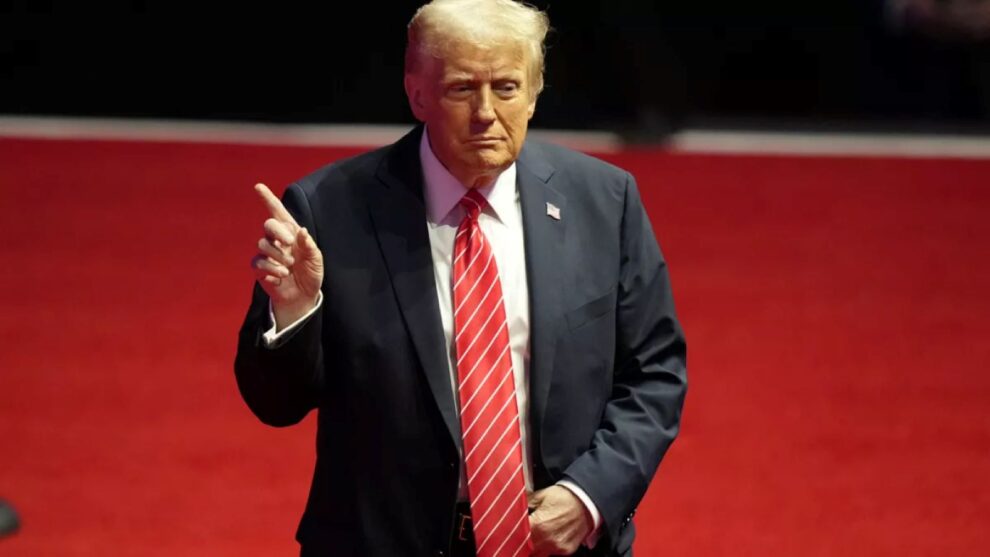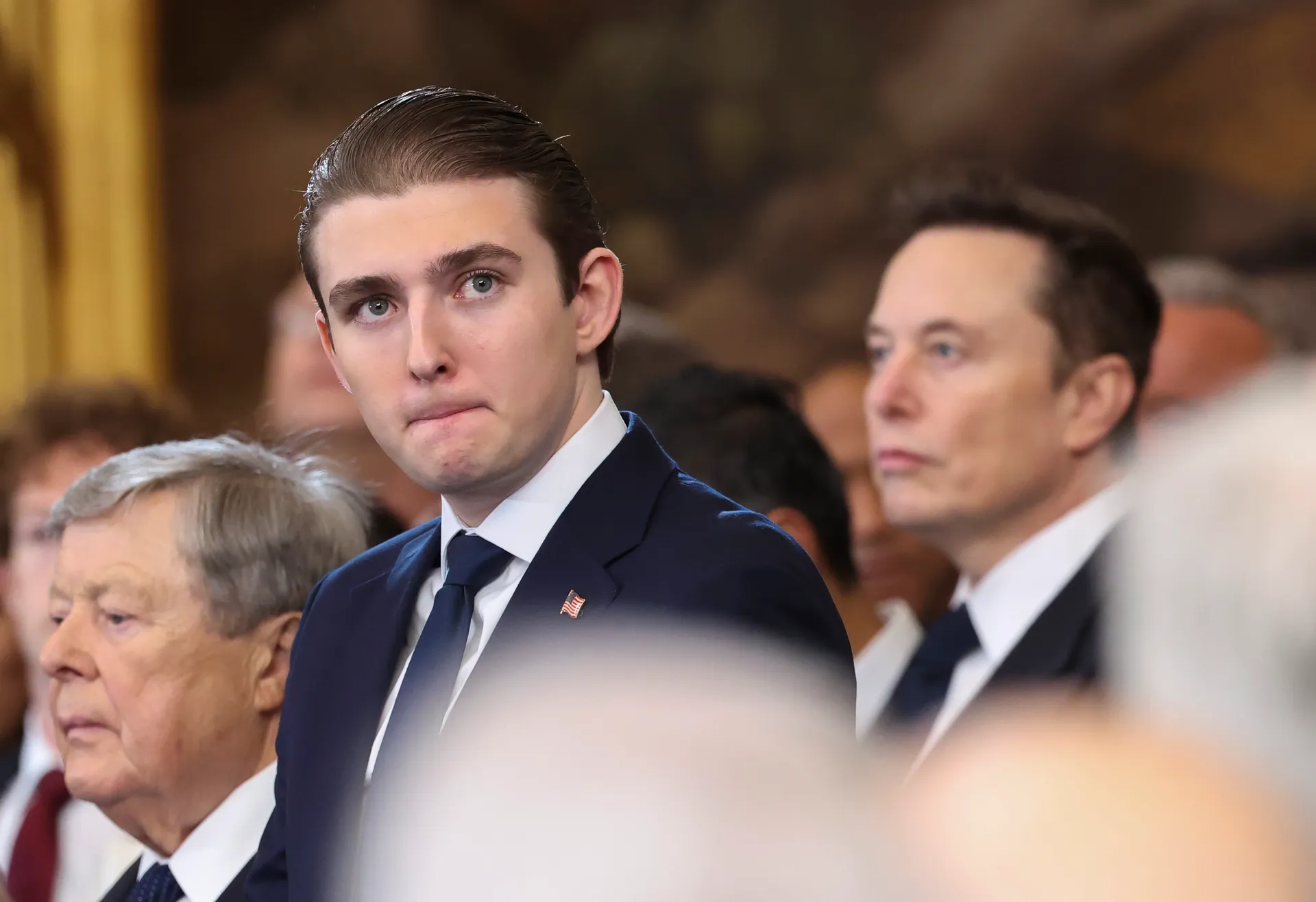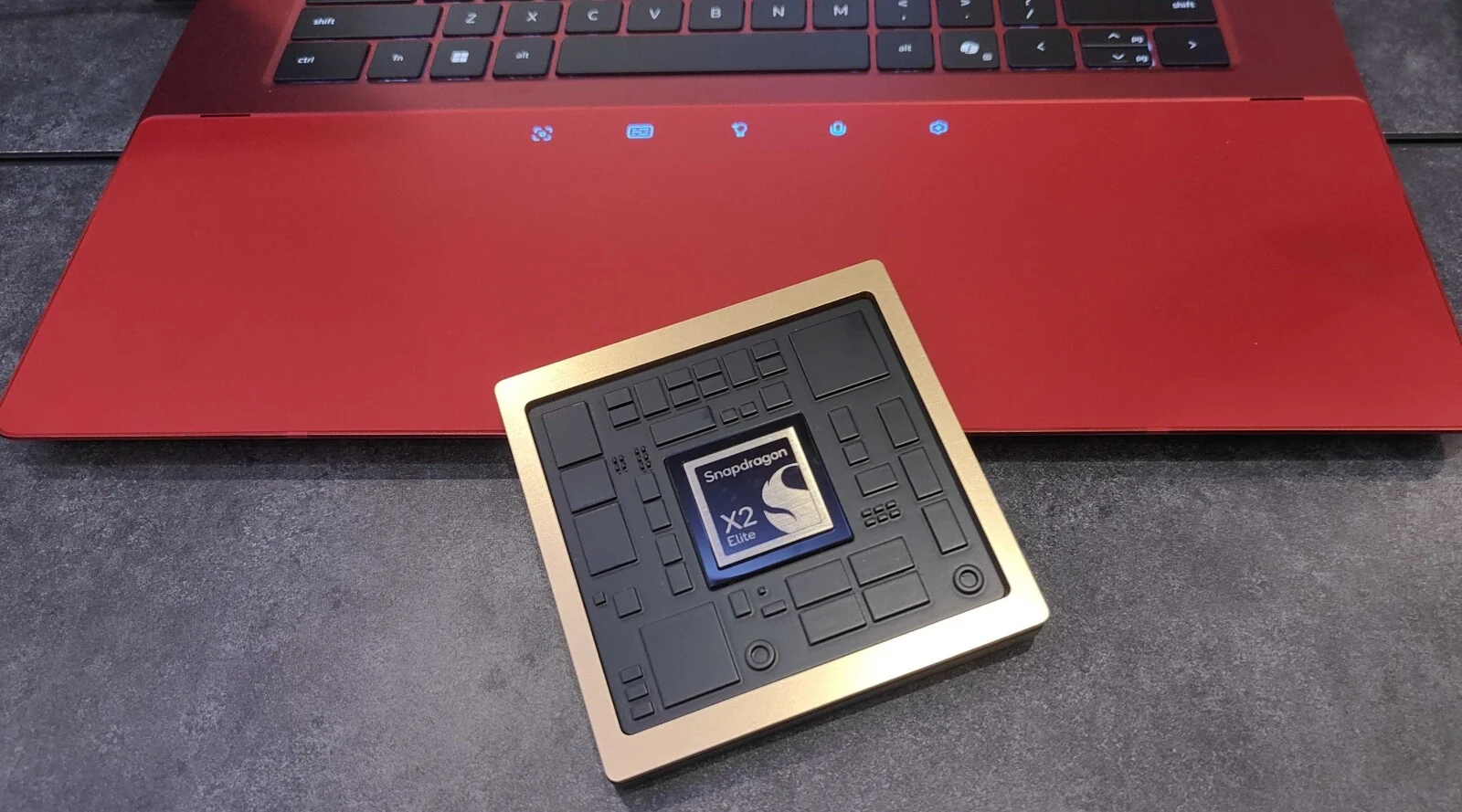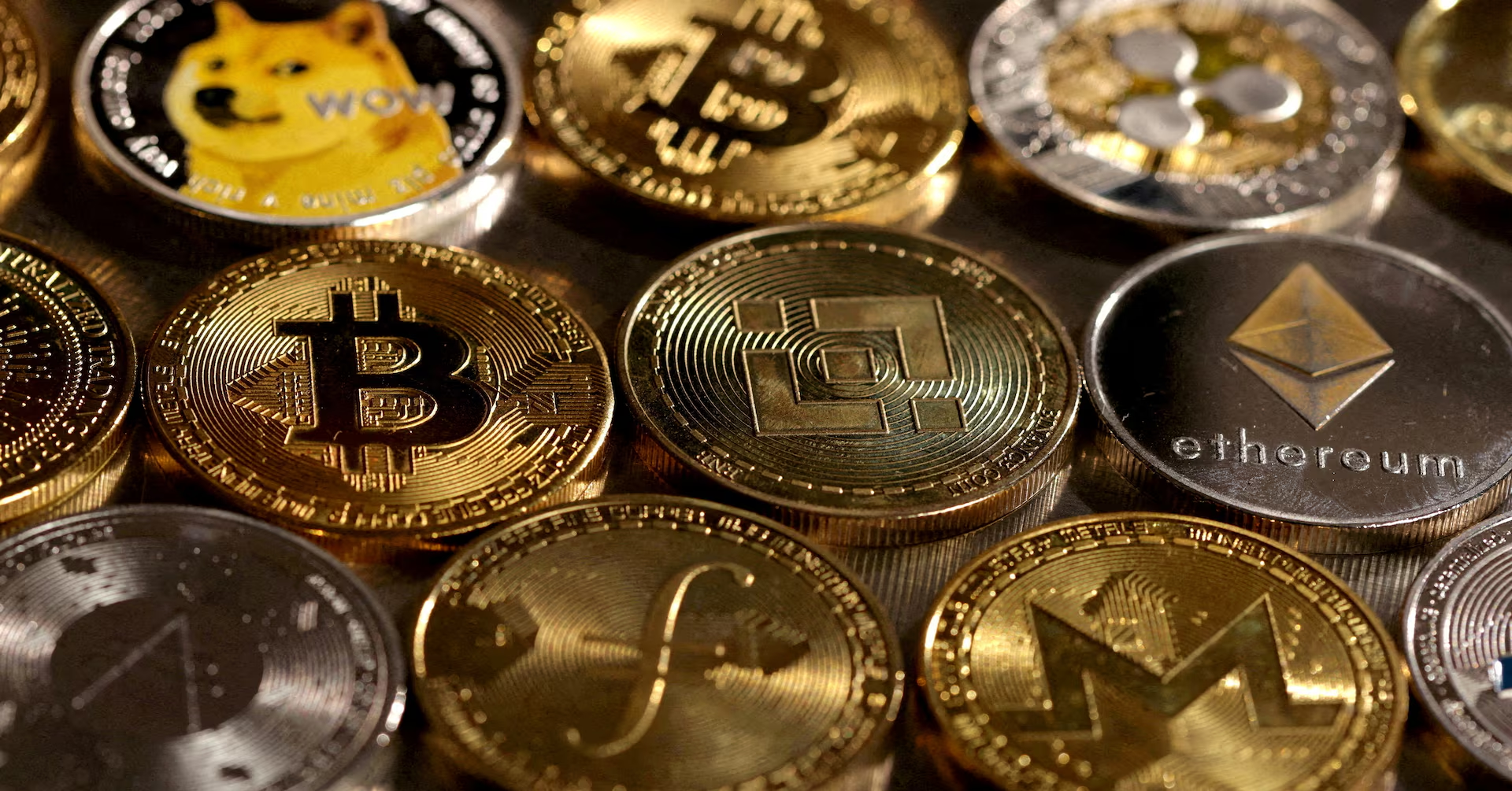President Donald Trump has recently expressed a compelling perspective on Bitcoin’s role in the global financial system, suggesting that the rising digital asset is actively “taking a lot of pressure off the dollar.” These comments, made public on June 27, 2025, mark a significant evolution in Trump’s stance on cryptocurrency and signal his intent to position the United States as a leader in the digital asset economy. This comes on the heels of a series of pro-crypto policies his administration has introduced, reflecting a strategic shift toward embracing digital currencies within the nation’s financial framework.
Key Takeaways:
- On June 27, 2025, President Trump stated that Bitcoin “takes a lot of pressure off the dollar,” advocating for its use in transactions.
- This marks a stark contrast to his previous skepticism toward Bitcoin.
- The Trump administration has implemented several pro-crypto measures, including establishing a Strategic Bitcoin Reserve and banning Central Bank Digital Currencies (CBDCs).
- Experts and lawmakers remain divided, with some supporting the innovation, while others raise concerns about regulatory oversight and potential conflicts of interest.
- Trump’s goal is to position the U.S. as the “crypto capital of the world,” emphasizing growth in the industry and technological leadership.
The Evolving Stance: From Skepticism to Endorsement
Trump’s recent endorsement of Bitcoin is strikingly different from his earlier, more critical remarks on cryptocurrency. Back in 2019, during his first term, Trump made it clear that he wasn’t a fan of Bitcoin, calling it “not money” and claiming it was “based on thin air.” He also voiced concerns that cryptocurrencies could facilitate illegal activity. Even after leaving office in 2021, Trump described Bitcoin as “seemingly a scam.”
However, a notable shift in his views became apparent as he prepared for his re-election in November 2024. Trump began integrating digital assets into his campaign, accepting cryptocurrency donations, and even launching a series of non-fungible token (NFT) trading cards along with his own meme coin, $TRUMP. By the time of his re-election, he had adopted the title of “crypto president,” signaling his commitment to fostering the cryptocurrency industry in the U.S. Now, he views Bitcoin as a “vital American asset” and stresses that the U.S. must lead in this space.
Bitcoin’s Role in Dollar Dynamics
At the core of Trump’s recent statement is the idea that Bitcoin’s increasing adoption could relieve some of the economic pressure on the U.S. Dollar. “You pay in Bitcoin… it takes a lot of pressure off the dollar,” Trump stated. He continued, “More and more people are paying with Bitcoin. It takes pressure off the dollar – a great thing for our country.” This notion suggests that if Bitcoin were more widely used for payments or as a store of value, it could reduce the direct demand for the dollar in some economic activities.
The U.S. Dollar, as the world’s primary reserve currency, carries enormous global responsibilities and is highly sensitive to economic pressures. Trump’s point is that by allowing a decentralized asset like Bitcoin to absorb some of the global financial activity, it could indirectly support the dollar’s long-term health by alleviating some of the burden tied to maintaining the dollar’s dominance. This aligns with a broader strategy to modernize dollar dominance by expanding its presence in the digital economy, potentially without intensifying the domestic fiscal burden.
Policy Framework: A Pro-Crypto Administration
Since re-election, the Trump administration has moved rapidly to adopt policies that favor the cryptocurrency market. These include:
- Executive Order on Digital Assets (January 23, 2025): This order outlined a policy supporting the “responsible growth and use of digital assets, blockchain technology, and related innovations,” while directing agencies to develop a comprehensive regulatory framework for digital assets.
- Strategic Bitcoin Reserve (March 6, 2025): Trump established a Bitcoin reserve, prohibiting the government from selling Bitcoin acquired through asset forfeiture (currently valued at over $17 billion). The initiative positions Bitcoin as a decentralized store of value, similar to gold, and allows government agencies to explore ways to acquire more Bitcoin.
- Ban on Central Bank Digital Currencies (CBDCs): Trump banned the creation and use of a CBDC, citing concerns over privacy and financial system stability, favoring privately issued digital currencies.
- Regulatory Shifts: The administration has appointed crypto-friendly regulators, like Paul Atkins as SEC chair, and launched the “Crypto 2.0” task force, aiming for clearer, more consistent regulations.
- Promotion of Stablecoins: The administration has supported stablecoins, pegged to the U.S. dollar, as a way to extend the dollar’s influence globally. Legislation to regulate stablecoin issuance has passed the Senate and is set to be finalized by August 2025.
Together, these policies are designed to cultivate innovation, attract investment, and maintain U.S. leadership in the global digital economy.
Economic and Geopolitical Implications
Trump’s full embrace of cryptocurrency, particularly Bitcoin, has sparked various reactions, carrying significant implications both domestically and globally:
Market Impact: Since Trump’s re-election and the launch of pro-crypto policies, Bitcoin has surged, reaching an all-time high of $111,970 by May 2025, marking a 60% increase since November 2024. This rally has lifted the broader crypto market as well.
Dollar Dominance: While some worry that Bitcoin could threaten the U.S. Dollar’s position, the Trump administration argues that embracing digital assets, especially stablecoins, will reinforce the dollar’s dominance by extending its reach into new digital systems worldwide.
Geopolitical Competition: Trump also frames this push as a response to international competition, particularly with China. He argues that if the U.S. doesn’t lead in the crypto space, China or other nations will take charge. By fostering a strong domestic crypto industry, the U.S. can secure its place as the global leader in financial innovation.
Conflicts of Interest: The Trump family’s involvement in crypto ventures, such as their meme coins and crypto-related businesses, has raised questions about potential conflicts of interest. Critics argue that these ventures could influence policy decisions. Senator Elizabeth Warren, for example, has criticized Trump for potentially “enriching himself and his family” through their crypto activities while undermining market oversight. The administration, however, insists that personal business ventures are separate from official policy.
The Path Forward
The administration’s vision for cryptocurrency suggests a future where digital assets play a significant, integrated role in the U.S. economy, serving both as a “pressure valve” for the dollar and a strategic tool in global finance. By focusing on private-sector innovation and providing a clearer regulatory framework, the goal is to foster a stable yet dynamic crypto environment.
As the U.S. moves forward, the ongoing dialogue between policymakers, industry leaders, and the public will be crucial. Balancing innovation, financial stability, and ethical considerations will shape the future of cryptocurrency and its impact on the dollar and the global economy.
Frequently Asked Questions (FAQs)
Q1: What does Donald Trump mean by Bitcoin taking pressure off the dollar?
A1: Trump suggests that as Bitcoin gains wider acceptance for transactions and value storage, it could reduce the demand for the U.S. Dollar in these areas. This shift in economic activity could indirectly support the dollar’s stability by diversifying how global transactions and value are conducted.
Q2: How has Donald Trump’s view on Bitcoin changed over time?
A2: Initially, Trump was critical of Bitcoin, calling it “not money” and a “scam.” However, since 2023 and especially after his re-election in 2024, he has shifted to strongly supporting Bitcoin, advocating for policies that foster its growth and integration into the U.S. financial system.
Q3: What specific policies has the Trump administration implemented regarding cryptocurrency?
A3: Key policies include an executive order supporting digital asset growth, establishing a Strategic Bitcoin Reserve, banning CBDCs, appointing crypto-friendly regulators, and supporting legislation to regulate stablecoins.
Q4: How might Bitcoin adoption impact the US Dollar’s global dominance?
A4: The administration argues that embracing digital assets like Bitcoin, particularly stablecoins, can extend the dollar’s reach in new digital financial systems globally, thus reinforcing its global dominance rather than diminishing it.
Q5: Are there any concerns associated with Trump’s embrace of cryptocurrency?
A5: Yes, concerns about potential conflicts of interest have been raised, especially due to the Trump family’s involvement in crypto ventures. Critics argue that these personal financial interests could influence policy decisions, highlighting the need for strong regulatory oversight to protect investors and market integrity.








